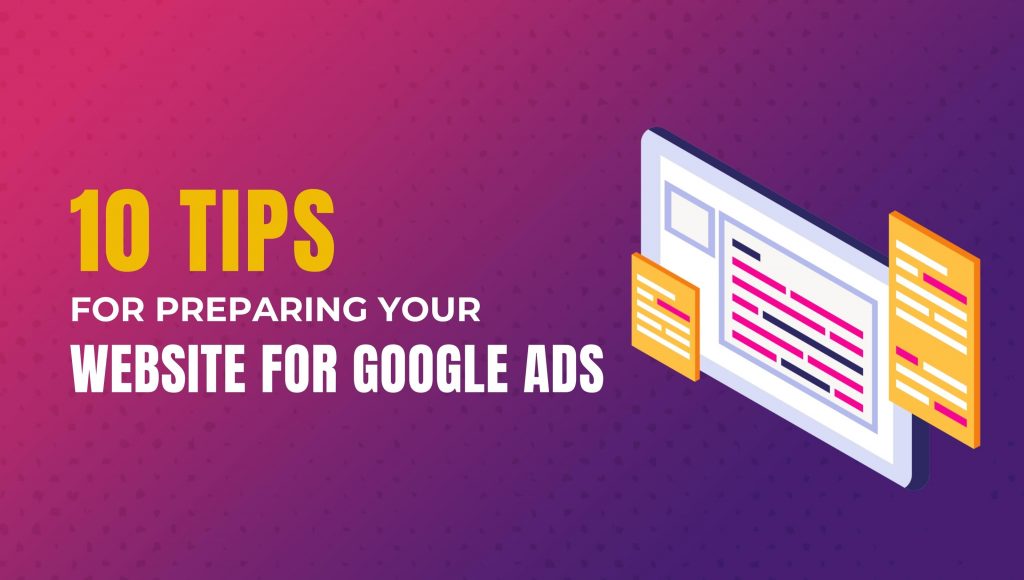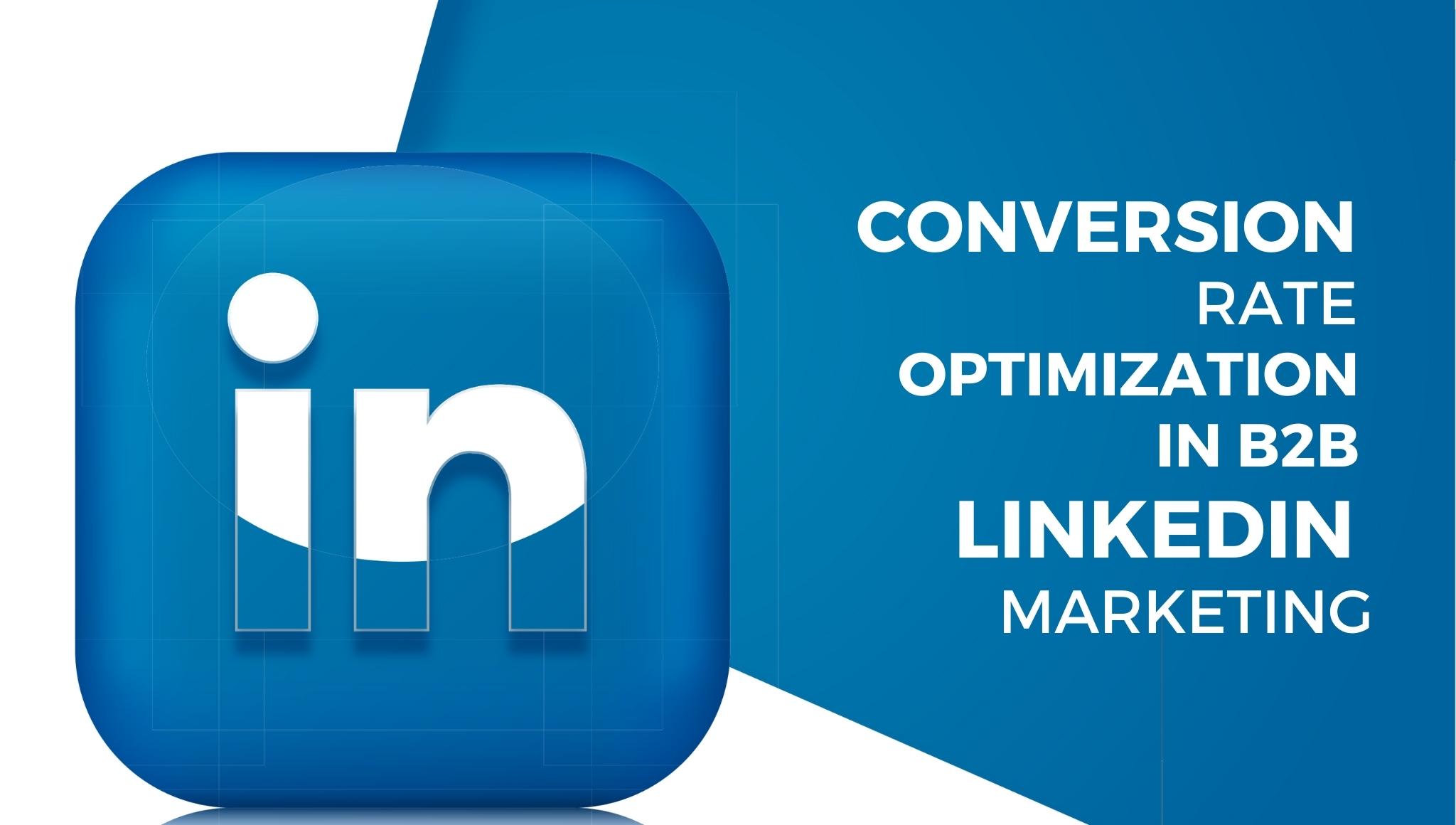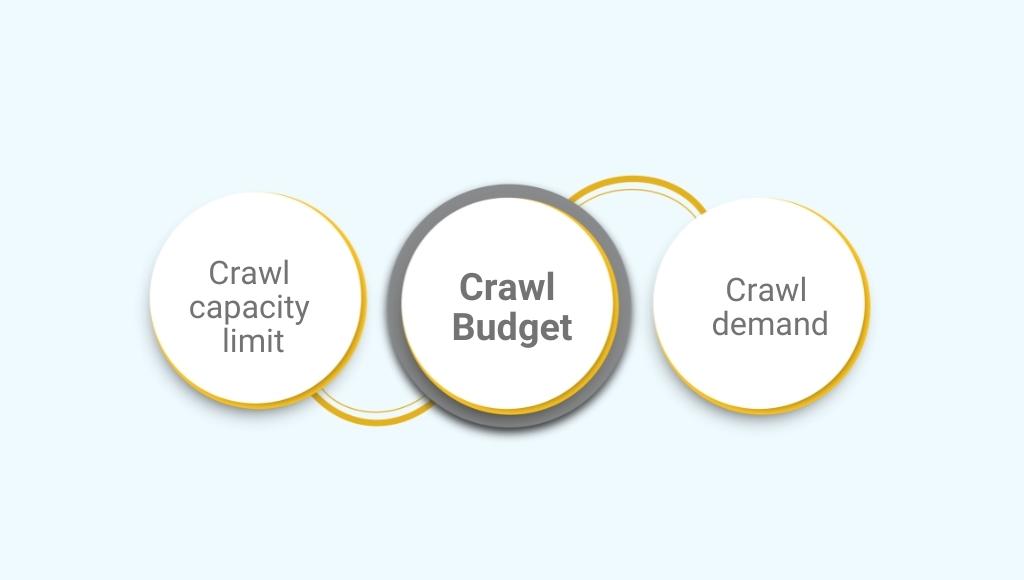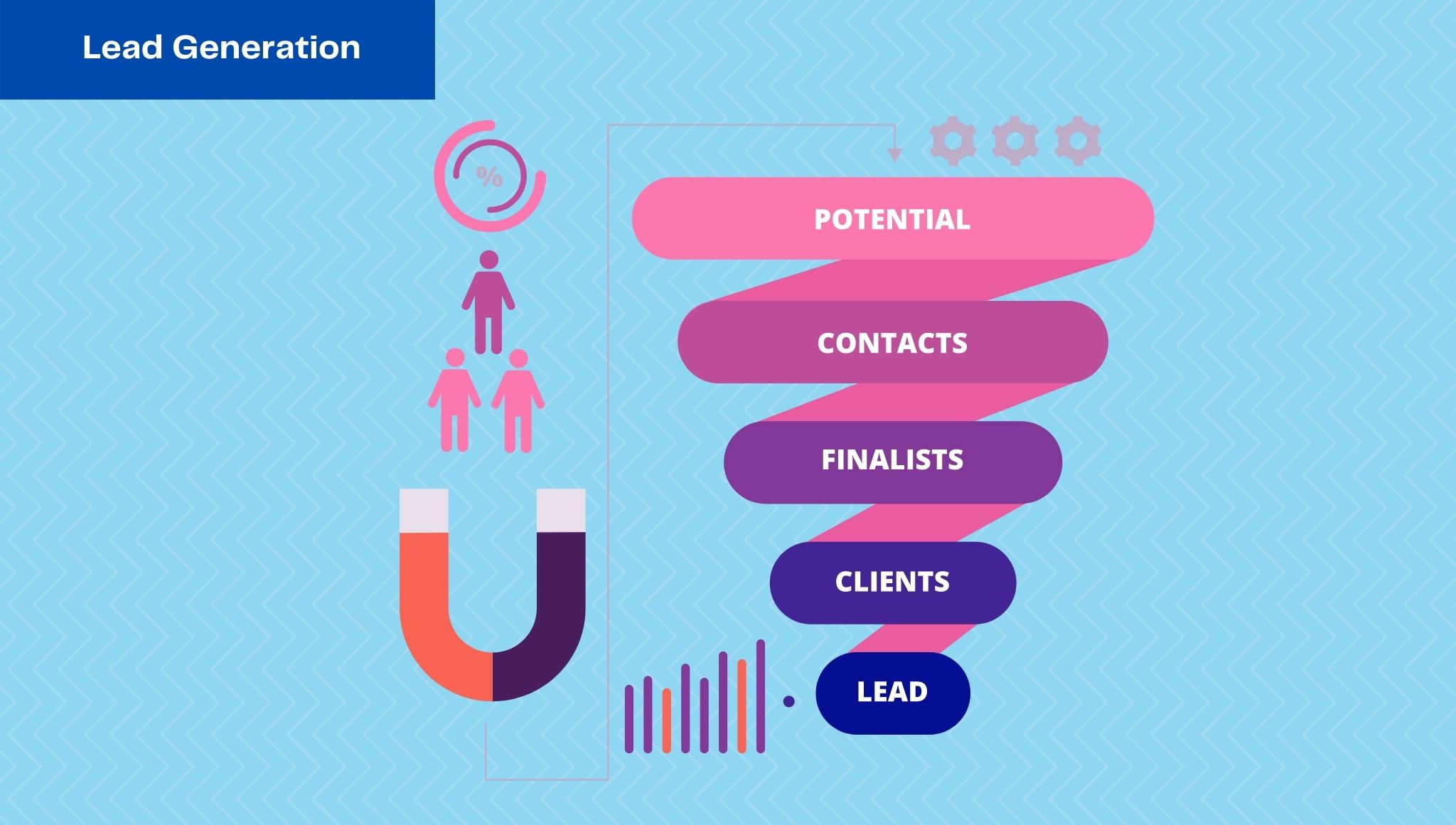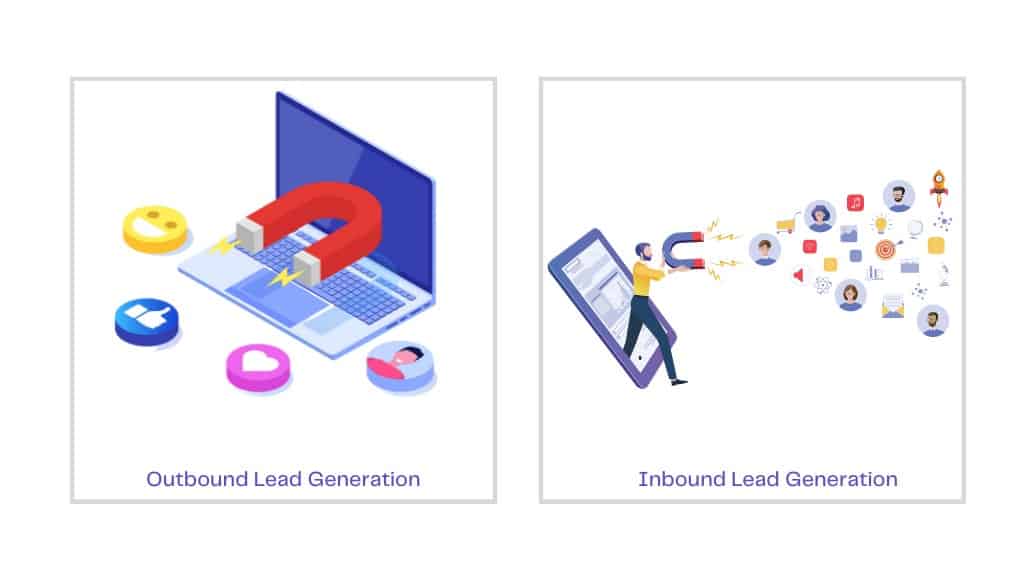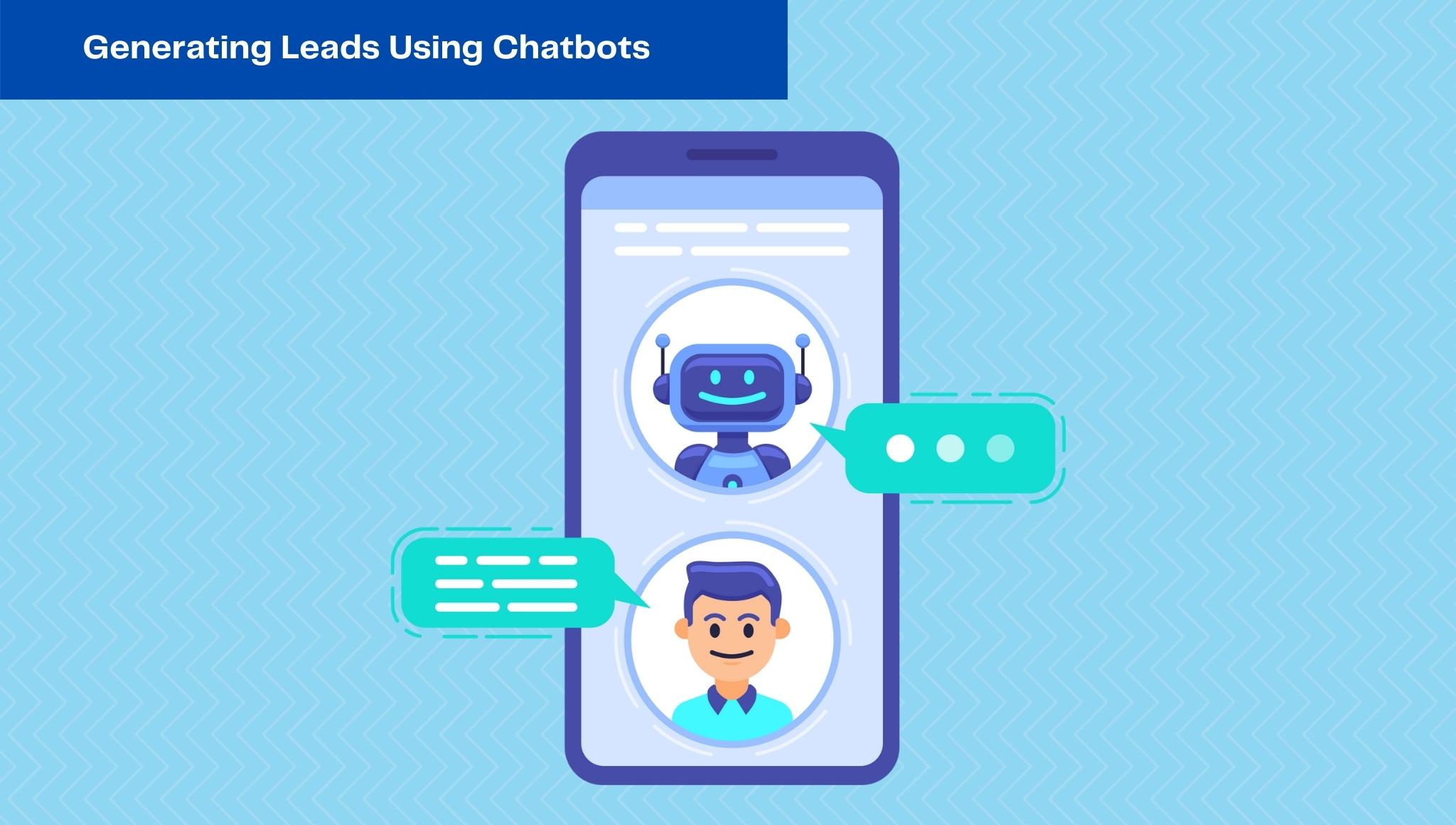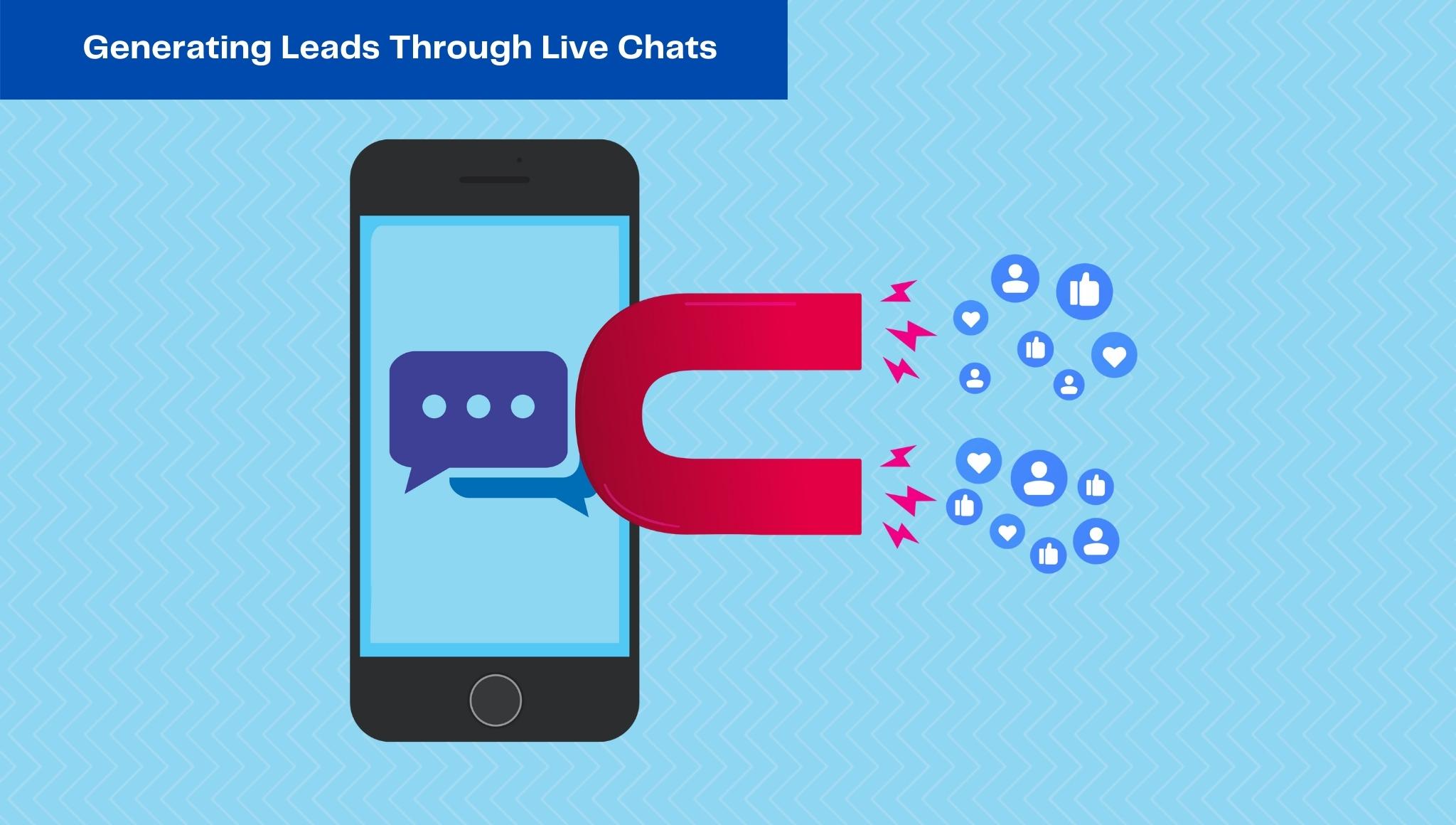10 Tips For Preparing Your Website For Google Ads
Preparing Your Website
Before you begin your Google Ads campaigns, there are a few preparations you should make to ensure that your website is ready. This includes optimizing the content and design of your site, making sure it is mobile-friendly, setting up conversion tracking, and more.
The first step in preparing your website for Google Ads is to optimize its content. This means ensuring that all webpages have relevant and useful information that is well organized and easy to read.
Here are 10 tips to get you started:
#1. For your website, have a goal in mind
Keeping a goal in mind is essential for constructing an effective website, just as you would when formulating any Google Ads campaign. This focus helps to prioritize and tackle the necessary items that will bring your vision to life.
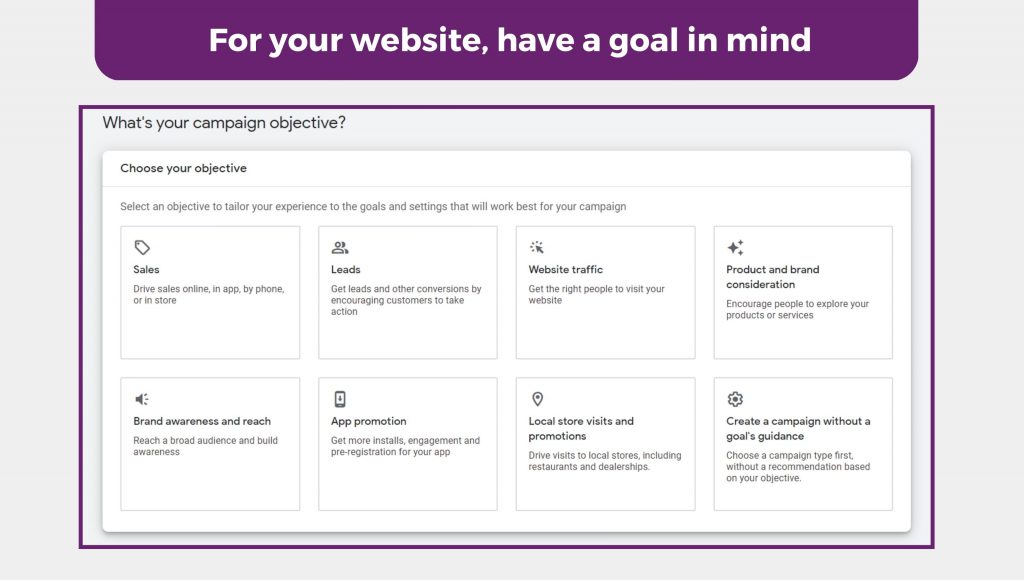
When crafting an effective website, it’s important to consider all potential users and their needs. Consider the layout of your page, the organization of your content, and accessibility features that help ensure visitors can navigate your site with ease. Additionally, make sure you’re practicing good SEO principles such as keyword optimization and image alt tags that will help search engines index your pages.
Finally, having a responsive design is essential for modern web pages in this age of mobile devices. Responsive designs allow your website to adapt to any device or browser size automatically, so you don’t have to create separate versions for each platform. This ensures that no matter what device someone visits your website from, they can access all its content easily.
Follow these steps when constructing an effective website, and you’ll be sure to create an experience that both visitors and search engines can appreciate. By putting the necessary effort into your site’s design, you can increase user engagement, boost conversions, and maximize ROI for your business.
#2. Have A Clearly Visible CTA on Your Home Page
Invite your visitors to take action with an easy-to-find CTA! Put it at the top of your home page, so they won’t have to look around in order to find out how they can engage. Making sure people understand what you want them to do is key. Don’t let opportunities slip away because of a hidden link or an unclear message.
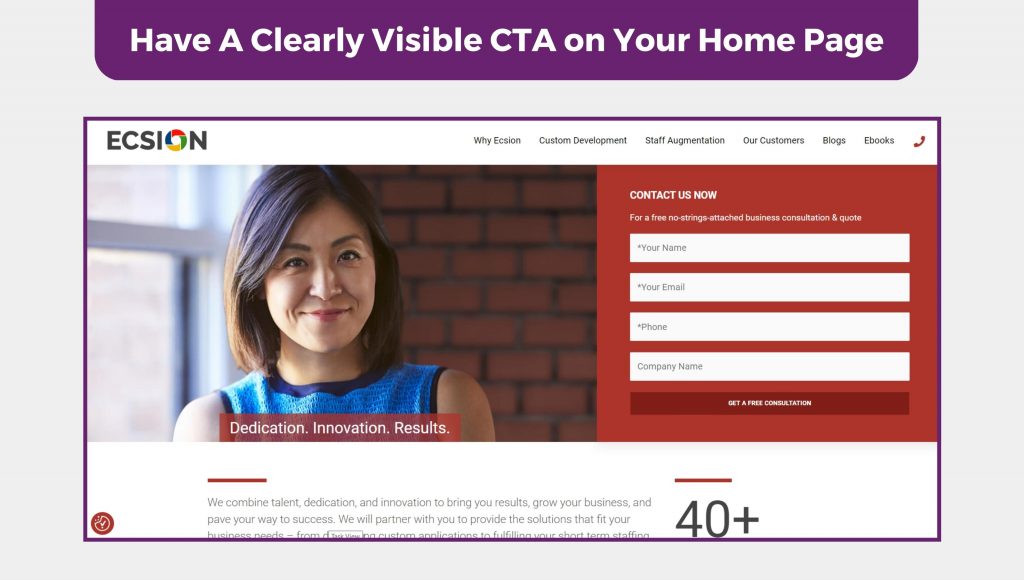
Keeping your call-to-action (CTA) simple and straightforward, such as “Sign up now” or “Download Our App”, will ensure visitors can quickly find it and know exactly what to do. Additionally, be sure to place CTAs throughout your website so that users are never more than a few clicks away from the action you want them to take. By paying close attention to the user experience and making sure CTAs are visible and easy to understand, you can increase conversions on your site. Of course, having an effective CTA is only half the battle; you also need creative content around it in order for people to take action.
Make sure any message or description that accompanies a CTA is engaging and informative; provide visitors with all the information they need to complete their task. Additionally, consider adding visuals such as photos or videos to your CTA for a more visually appealing experience. By utilizing CTAs strategically and creating an effective user experience around them, you can increase conversions on your website and turn visitors into customers!
Remember that the most important thing when it comes to calls-to-action is making sure your visitors know what to do. Make sure your CTAs are visible, clear, and easy to understand so that visitors don’t have any trouble taking action. Also, remember that creating content and visuals can help draw attention to your CTA; don’t be afraid to experiment with different kinds of media in order to make your call-to-action stand out.
#3. Make sure your landing pages have a CTA or a contact form
With your home page as the greeting to visitors, make sure you don’t forget an essential element: the CTA. Not only that, but on any other service or landing page – forms can be a great way of providing and capturing clear-cut actions for customers!
#4. For your ads, have landing pages in mind
Your Google Ads should always be directed to a website page that is highly relevant, ensuring your message resonates with potential customers. Make sure they land in the right spot!
This could be a product page, newsletter sign-up page, contact page, or even a blog post. Keep in mind that people are more likely to convert if they land on a specific page that caters to their needs, so make sure you’re targeting and messaging are clear for each campaign.
To track the success of your campaigns, you should set up conversion tracking. This enables you to assess the effectiveness of your Google Ads campaigns by tracking metrics such as clicks, impressions, and conversions (such as purchases or sign-ups).
#5. Having a Setup Google Analytics Account
Track the success of your website and Google Ads campaigns with Google Analytics, a free tool designed to give you insight into how visitors interact with your online presence. Easily connect it with Google Ads, giving access to valuable data that can help optimize both sites for maximum results!
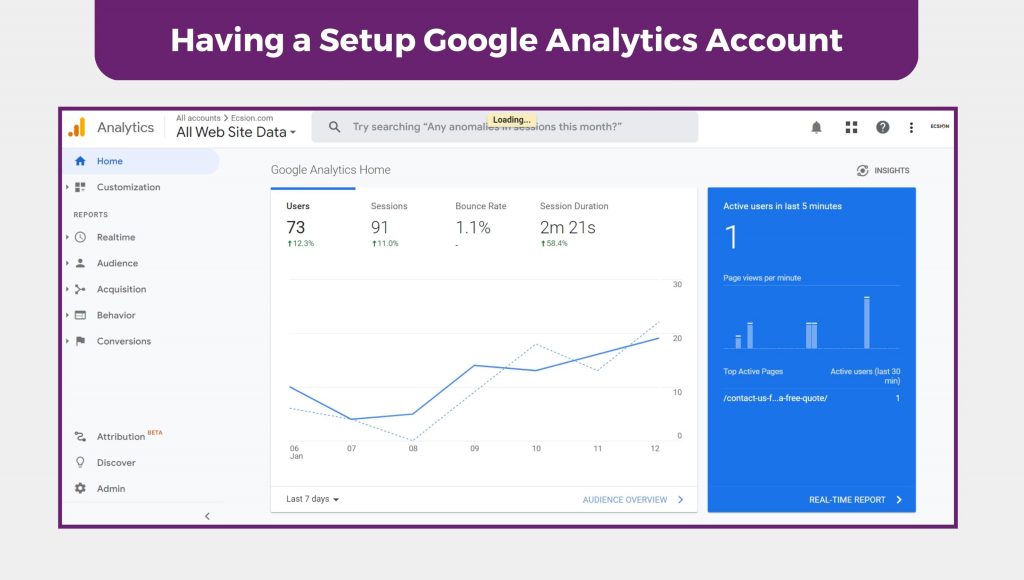
#6. Having Google Tag Manager Setup
Google Tag Manager is a great tool to use in combination with Google Analytics and Ads; it allows you to track the effectiveness of your ad campaigns so that you can get an idea of how successful they are. Get yours for free today!
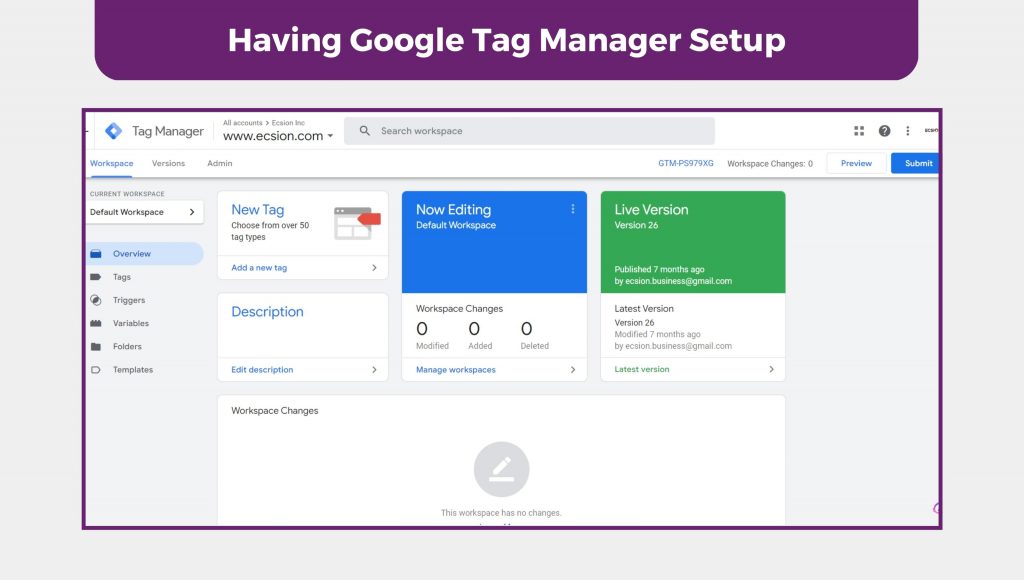
You can use Google Tag Manager to: — Easily create tags to track user activity and convert visitors into customers — Monitor the effectiveness of your online campaigns in real-time — Troubleshoot any issues that may arise with your tags or campaigns — Automate the process of deploying and managing your tags Quickly make changes to the content on your website without editing HTML code.
Google Tag Manager also works seamlessly with other Google products like Adwords, YouTube Ads, and DoubleClick. With it, you have access to a powerful suite of tools that can help you optimize your marketing efforts. Get yours for free today!
#7. For Tracking Purposes, Link Your Phone Numbers and Email Addresses
Tracking conversions for your Google Ads campaigns requires you to take notice every time someone clicks on the telephone number or email address displayed prominently on your website. You can identify these links by simply highlighting them with a cursor, where they will be revealed as “tel:” and “mailto:,” respectively. Knowing when people are messaging or calling you allows businesses to measure their success more accurately than ever before!
#8. Make it Simple to Find Your Contact Information
Make sure that customers can easily and quickly connect with you by providing all of your contact information on one page. Don’t let them waste valuable time trying to track down how they can get in touch—ensure the answer is just a few clicks away!
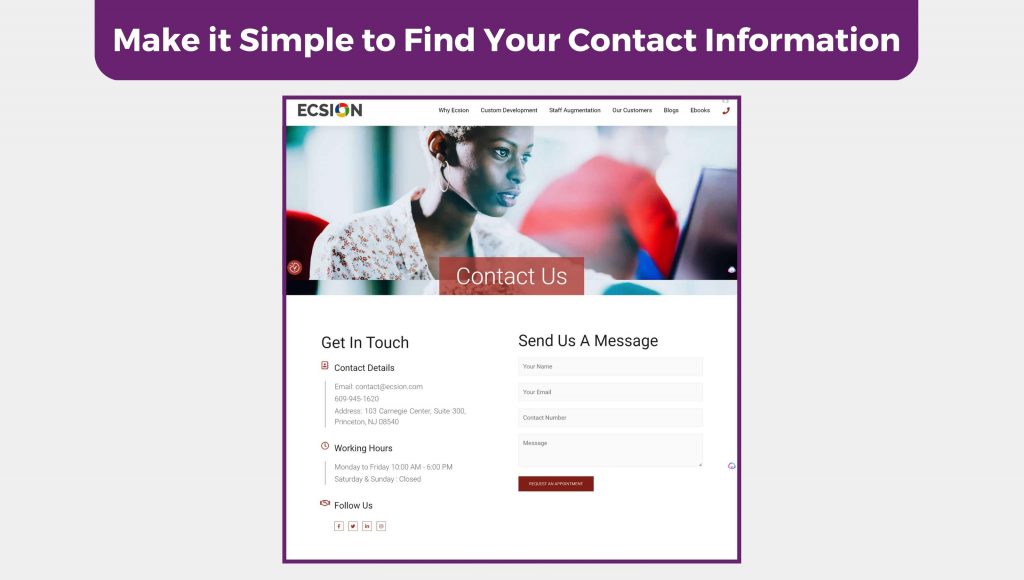
Make sure to list your phone number, email address, physical address, and any other contact information that is relevant to your business. This will show customers you’re accessible and available to answer their questions or help them with any issues they might have. Additionally, consider adding a contact form on this page so people can easily send in inquiries without leaving the website.
Finally, link to social media platforms like Facebook, LinkedIn, Instagram, Twitter, etc., if these are active channels for customer engagement. Doing this will ensure customers have multiple avenues of communication at their disposal when it comes time to reach out for help or more information about your business.
#9. Ensure That Your Website Is Mobile-Friendly
Your website needs to make the leap into mobile friendliness! With nearly half of Google searches coming from phones and tablets, your business can’t afford to miss out on potential customers who land on a site that’s not optimized for their devices. Make sure you don’t get left behind; stay ahead by creating an easy-to-use experience across all platforms.
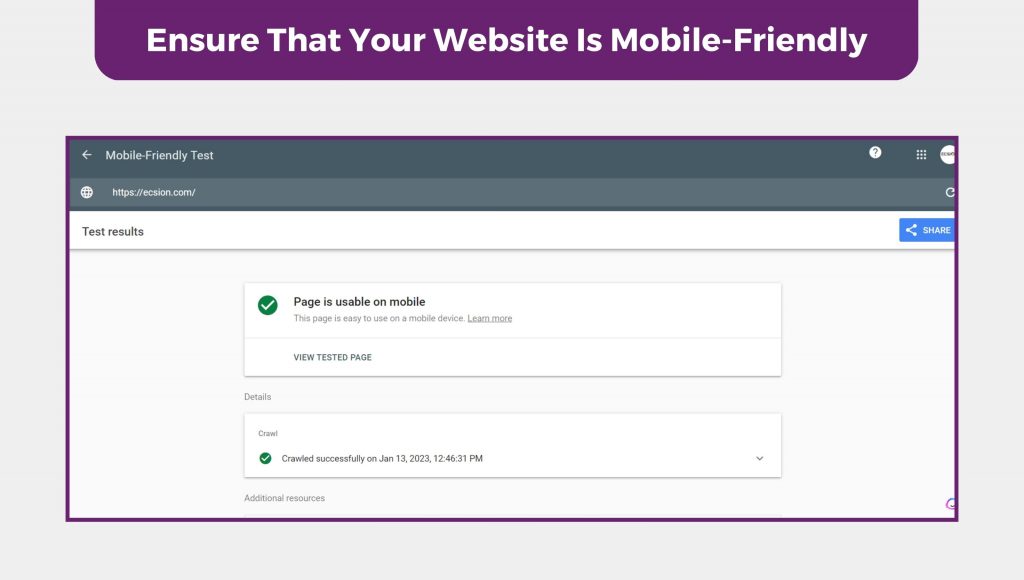
More Information Please read more about the mobile-friendly website.
#10. Have quick page load times
Is your website loading fast enough to retain customers? Slow page load times can have major implications for businesses, as potential customers are likely to move on and find a faster solution. Fortunately, Google Analytics has the tools you need to measure and improve your site’s speed—it may just be what ensures that loyal customer base remains intact!
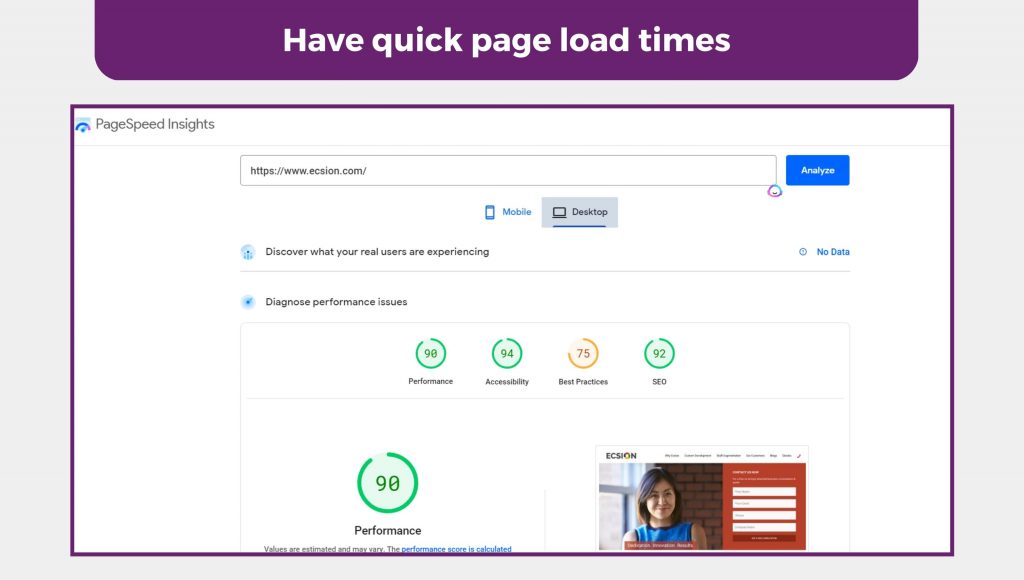
Download a Free Ebook on Fast Page Loading – Download Now
